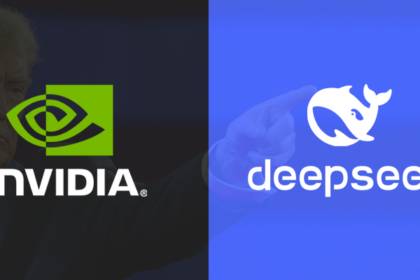The recent launch of DeepSeek’s R1 model has significantly impacted the global AI sector, showcasing not only remarkable performance but also a commitment to the open-source ethos. Introduced on January 20 by the Chinese AI firm DeepSeek, this model competes with OpenAI’s o1 while costing only 3% of its price. Its fully open-source design positions it as a transformative force in the AI arena.
Setting New Standards in AI Efficiency
The DeepSeek R1 is a groundbreaking reasoning model developed through extensive reinforcement learning, akin to OpenAI’s o1. However, its open-source nature allows developers and researchers worldwide to access and enhance its code. As noted by DeepSeek on GitHub, “The open-source DeepSeek-R1, along with its API, will support the research community in creating more efficient models in the future.”
This approach contrasts sharply with proprietary models from major tech companies like OpenAI and Google. By democratizing access to advanced AI technology, DeepSeek encourages innovation and collaboration, enabling smaller entities to participate in the AI evolution.
Strategic Innovation Approach
Founded in 2023, DeepSeek is a newcomer in a landscape dominated by established tech giants. The company’s focus on creating smaller, more efficient models is both pragmatic and strategic. Unlike traditional AI models that depend on extensive parameters for object description, DeepSeek emphasizes efficiency. For example, its open-source DeepSeek V3 model utilizes only 671 billion parameters, activating just 37 billion during operation—significantly lower than industry norms.
Moreover, the cost-effectiveness of DeepSeek’s strategy is noteworthy. The company trained the DeepSeek V3 model using merely 2,048 Nvidia H800 GPUs at a total cost of $5.6 million—substantially less than what OpenAI and Google spend on similar projects. In light of U.S. restrictions on high-performance chip exports to China, DeepSeek’s ability to achieve significant advancements with affordable hardware underscores its innovative capabilities.
Navigating Geopolitical Challenges
The success of DeepSeek’s R1 model also sheds light on the broader implications of open-source innovation amid geopolitical tensions. While the U.S. adopts protectionist measures limiting advanced chip exports to China, DeepSeek’s accomplishments illustrate that innovation can thrive despite such barriers. By utilizing cost-effective methods and fostering open collaboration, Chinese firms like DeepSeek demonstrate their competitiveness on a global scale.
For emerging innovative businesses in China and beyond, DeepSeek’s methodology offers a roadmap for success. By prioritizing efficiency, accessibility, and openness, these companies can establish their presence in the competitive AI market and contribute to technological progress worldwide.
Towards a Collaborative Future
DeepSeek’s R1 model represents more than just a technical achievement; it embodies the collaborative spirit that has fueled the internet’s growth. In an increasingly divided world marked by geopolitical rivalries, the R1 model serves as a reminder that cooperation and transparency are vital for advancement.
As competition in AI escalates, the triumph of DeepSeek’s open-source model could spark a new wave of innovation that challenges proprietary systems and promotes a more inclusive and cooperative future for the industry.










